How To Perform Twitter Research To Improve Ad Performance

Twitter can be a tricky platform for SEM account managers. Performing keyword research is a lot different than standard search campaigns, because of user intent on the platform. Twitter is a real-time micro-blog. Users are not necessarily going there to search for an answer like on Google or Bing. They’re going there to find relevant news, engage with others, share articles/thoughts, establish thought leadership and be a part of the conversation. With this in mind, how do you perform Twitter keyword research?
In this article, you will discover how to perform Twitter keyword and hashtag research. Performing this research will help increase performance by showing which keywords and hashtags your target audience uses on an everyday basis. With this understanding, you can craft and target your campaigns to their specific interests.
Keyword Research
Before I create an AdWords campaign, I always turn to the Keyword Planner to understand search volume, CPCs and find other relevant keywords. I use this process to craft organized campaigns that drive traffic to right the ads. I also conduct a very similar process to create Twitter campaigns and ads.
I like to start my Twitter keyword research with Topsy. It’s a powerful social analytics platform that helps me understand keyword volume on Twitter. Meaning, it shows how many times that keyword was used in tweets. You can search keywords to get volume and trends with results showing over the past hour, day, 7 days, etc.
Here’s an example of the results for the keyword “nursing school.” We can see in the past 27 days there were 19,290 tweets that contained this phrase.

Another feature on Topsy is the social trends search. For this example, I wanted to see how popular the phrase “nursing school” was compared to #nursing and #nursingschool.
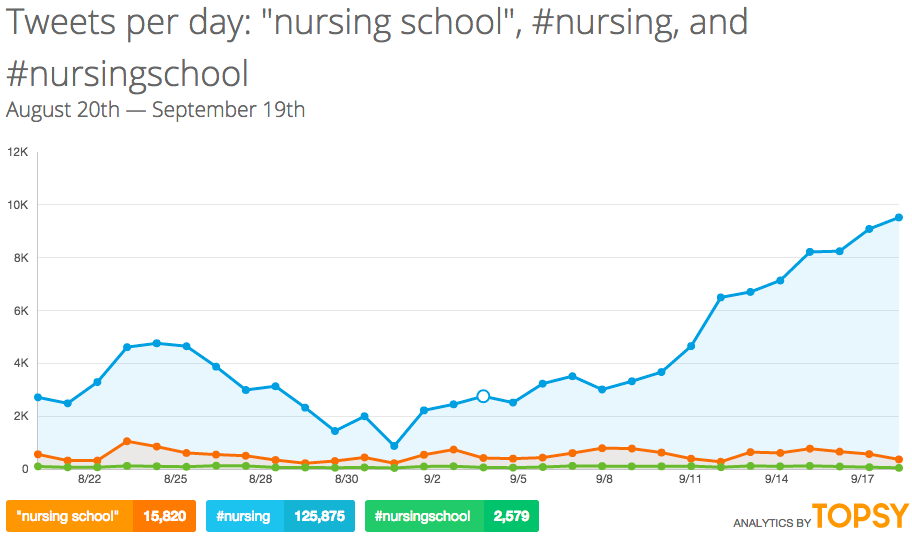
We can see there’s been a huge bump in #nursing probably due to Miss Colorado wearing her scrubs at the Miss America pageant and with the start of nursing school. Again, this is a great tool to comprehend keyword and hashtag volume and trends over time.

Also, I’ll seek to understand keyword intent with their sentiment score and how often people are tweeting these keywords. We can see that #nursing has a really high sentiment score of 91.
Hashtags
Now that I understand keyword volume, trends and sentiment, I then look for relevant and related hashtags on Twitter with Hashtagify. These hashtags will serve as a way for me to target my ads when setting up my campaigns.
Below are the top 10 hashtags related to #nursingschool.
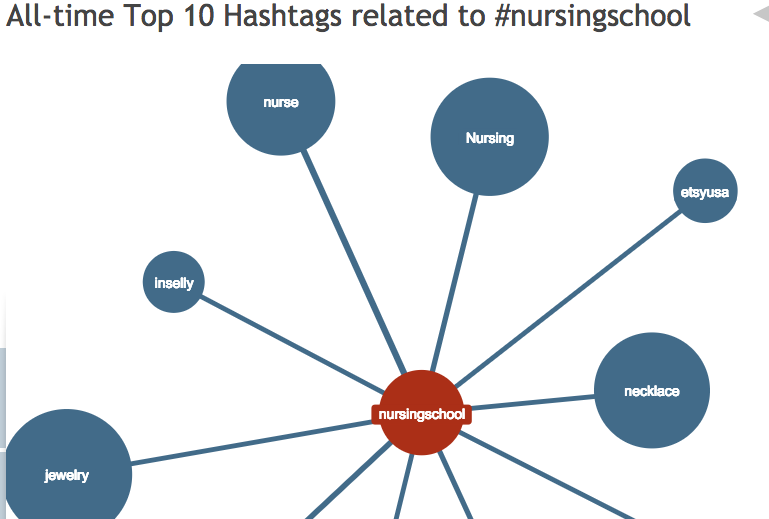
I can then zero in on a related hashtag, in this case, #nursingstudents, to explore the correlation and popularity in relation to #nursingschool.
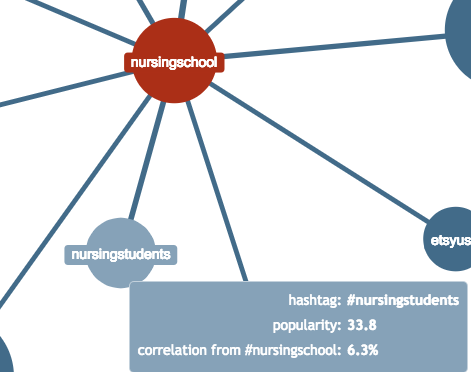
#nursingstudents is probably a good hashtag to target if I want current students to see my ads.
Another good tool is Hashtag.org which displays a word cloud of related hashtags. Depending on our audience, we want to target different hashtags with different messages. For example, we have humorous tweets for #badnursingtip and studying related tips/blogs for #studentnurse.
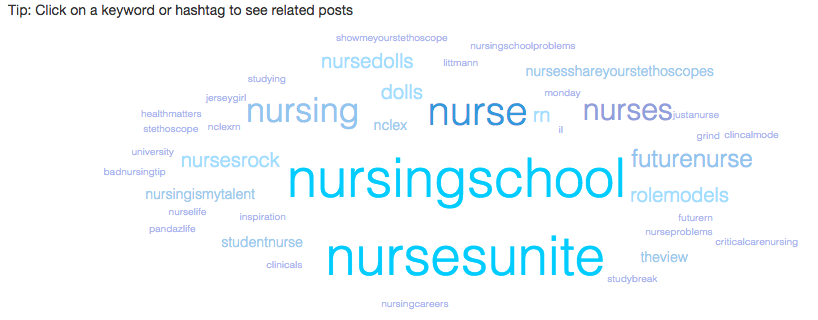
Influencers
Another feature some of these tools offer is a list of influencers for your keywords and hashtags.
Here’s an example of the Top 6 Twitter influencers for #nursingschool.
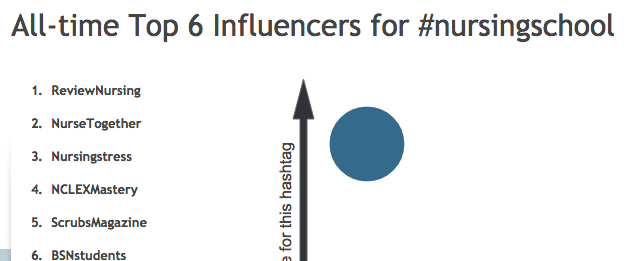
Once I know the influencers, I analyze all of their Twitter accounts looking for:
- Relevant keywords and hashtags I may have missed
- Types of content they share (blogs, photos, videos, etc)
- Which tweets got the most engagement
- How they interact with their audience
- Who they interact with (to find more influencers)
- Twitter chats they participate in
- Potential new followers

After you identify and analyze the influencers, you can then start to engage them. Try participating in the same Twitter chats, sharing relevant content with them, engaging with their followers and promoting your content to their followers with ads.
Schedule & Locations
Now that I understand the keywords and hashtags I want to use and target, it’s time to start honing in on time of day and locations of these tweets to increase my ad’s potential performance.
Hashtags.org provides a great 24-hour trend graph displaying when #nursingschool was tweeted. Based on this graph, 7 pm CT is the most popular time and winding down by midnight. For this hashtag, I’ll set up an ad schedule for my ads to target this window for maximum results.
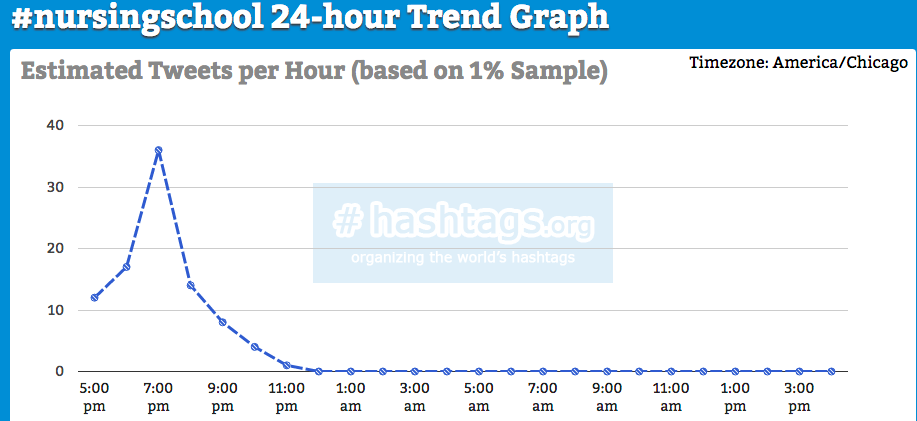
Next, I research which states have the most tweets with this hashtag to help with any geo-targeting.
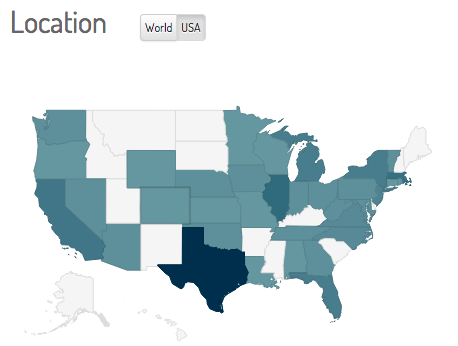
Conclusion
Performing research on Twitter before setting up your campaigns is a great way to increase performance and maximize ROI.
Remember to use 3rd party research tools as well as the Twitter interface for your keyword and hashtag research. Also, make sure to identify influencers, understand what’s working for them, and tweet shareable content to attract new followers. Finally, analyze time of day and geo-location trends to ensure your ads show when your target audience is online.
What do you think? Do you perform research before launching your Twitter campaigns? What tactics have worked best for you? Please share your thoughts in the comments below.


